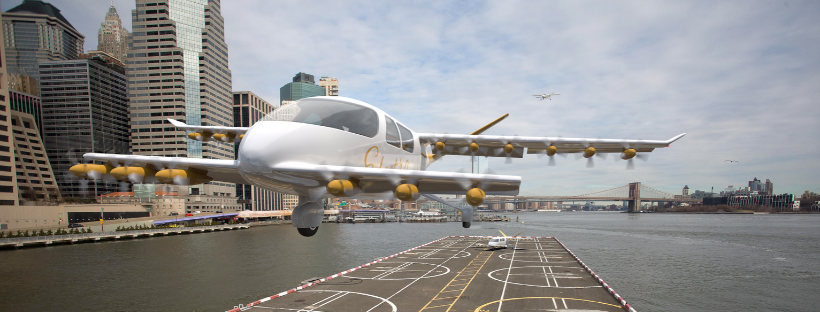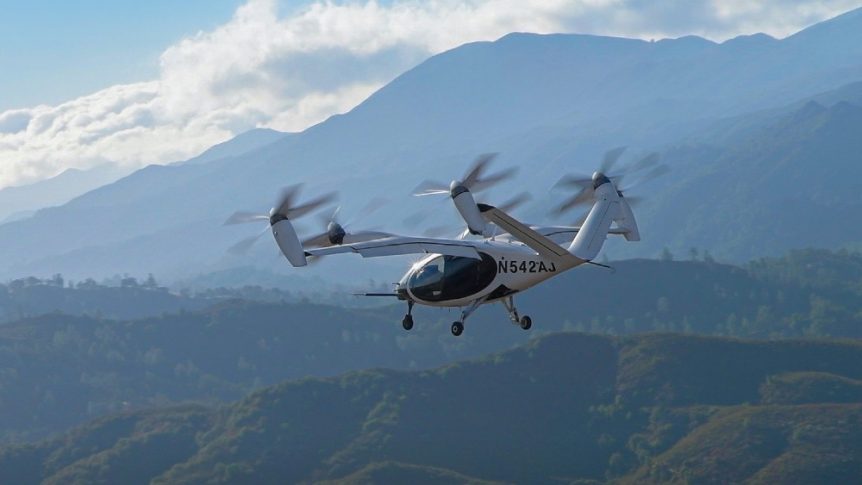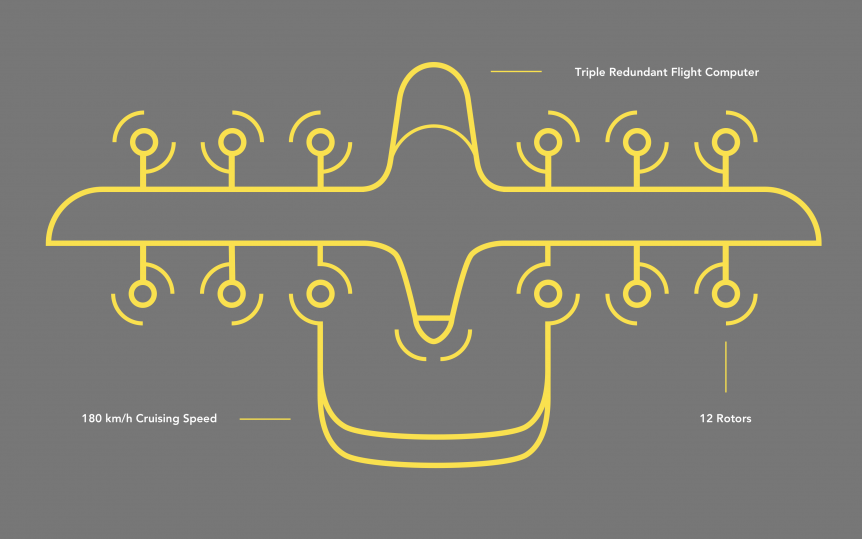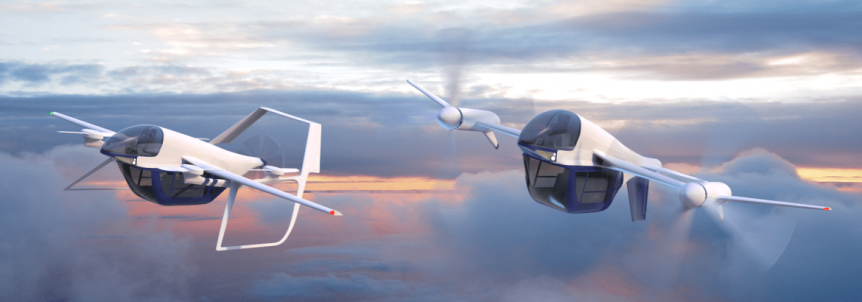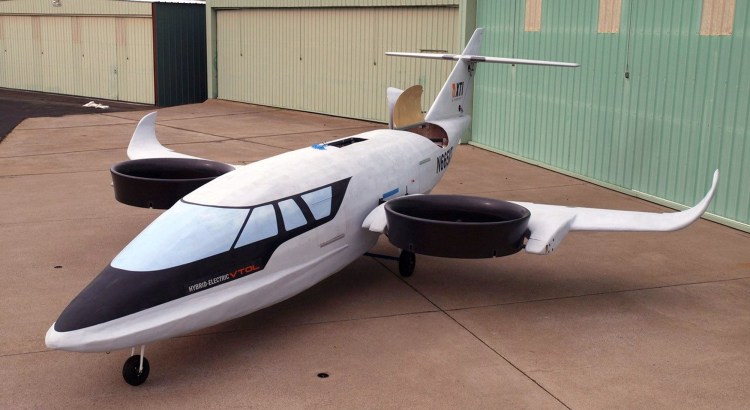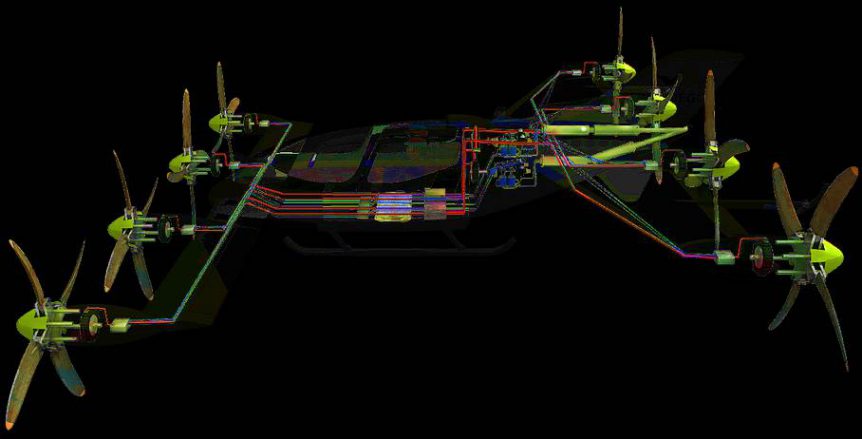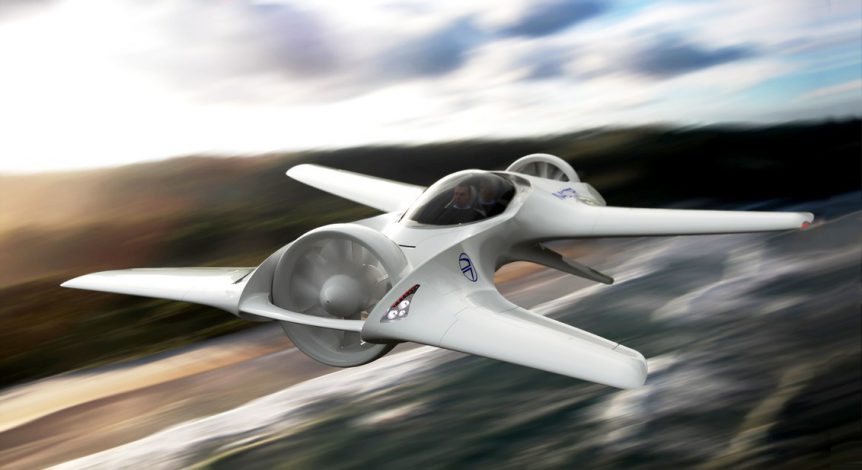Competition is growing in the electric Vertical Take Off and Landing market, with 407 potential builders listed in eVTOL News. Vertical flight takes power, though, and with available batteries limiting range, most such vehicles can make only short hops. Alternatives that allow speedier, longer flights, in the form of electric Conventional Short Take Off and Landing (eCSTOL) aircraft are in development. Such craft offer the benefit of requiring less power for takeoffs and climbs, being more aeronautically-based than power-based. Airflow, for instance, claims operating costs for their eCTSOL craft is one-third that of an eVTOL or helicopter. We will look at three eCSTOL craft that seem to making headway at this time. The infrastructure (in two cases below) to support their flight may already exist. Airflow Curt Epstein, writing in Future Flight, under the headline, “Infrastructure Needs for eSTOL and eVTOL Aircraft May be Closer than Imagined,” notes the “intense study” being undertaken. Speaking at the Vertical Flight Society’s Electric …
Joby “Unicorn” Gains Private, Military Backing
Joby Aviation is one of few “unicorns” in the electric Vertical Take Off and Landing (eVTOL) market, a billion-dollar enterprise. With funding coming from Toyota, several venture capital investors, Uber and the U. S. Army, Joby seems poised to demonstrate Urban Air Mobility (UAM) in a serious way. In 2011 JoeBen Bevirt, founder of Joby Energy, Joby Aviation, and creator of those knobby-looking tripods you see everywhere, invited Patrick McLaughlin to visit his design studio. Your editor got to tag along. On Woodpecker Ridge, north of Santa Cruz, JoeBen’s barn-like studio housed about a dozen engineers and designers all working on electricity-generating kites. He wore a T-shirt reading, “If you’re not living on the edge, you’re taking up too much room.” That edginess has helped him, in the last decade to be a major player, with now over 500 employees in the aviation sector. JoeBen and Patrick discussed motor design and integration with a controller Patrick had built from off-the-shelf …
Wisk Tests Cora in US, New Zealand
Recently renamed Wisk (formerly KittyHawk) has resumed flight testing of its Cora eVTOL (electric Vertical Take Off and Landing) machines following a cautionary corona virus shutdown. It’s already got a fleet, with several prototypes in the U. S. and at least four in New Zealand. New Zealand seems to have a lock on flight testing for unpiloted aircraft, with Pyka and Cora both finding amenable administrators willing to allow flight tests. Boeing and Wisk are collaborating on achieving urban air mobility with the two-seat machine, and getting a lot of positive vibes from the locals. Partly from the NZ government, partly from local businesses, and partly from indigenous Maori tribes’ people, Wisk and Cora have found wide-spread acceptance down under. Government Support Research, Science and Innovation Minister Megan Woods announced last October that, “The Government is establishing an Airspace Integration Trials Program to support the safe testing and development of advanced unmanned aircraft and accelerate their integration into the aviation …
Terrafugia in Transition
Terrafugia, a company started by a group of inspired college friends, has made it a mission to bring a flying car to the marketplace. Quite literally – it’s in their mission statement: “Terrafugia’s mission is to create the ultimate mobility solution – flying cars.” Even though the term is somewhat decried in current parlance – things like urban air taxis or sky taxis that would provide Urban Air Mobility being preferred. The Transition Their first craft, the Transition, earned a high hype score, with even Hammacher-Schlemmer including the flying car in their catalog. It flew at AirVenture in 2013, demonstrating its folding wings and reasonable Light Sport Aircraft performance (even with a waiver for its “heavy LSA” gross weight). In some respects, the Transition is like Molt Taylor’s famous Aerocar, the first such vehicle certified for land and air travel. It’s a great deal simpler to operate, though, not requiring a trailer like the Aerocar to haul the wings and …
A 2/3-Scale XTI TriFan 600 Hovers Successfully
XTI’s TriFan 600 recently flew as a TriFan 665, for the 65-percent test concept vehicle. There are good reasons for a first flight on this reduced scale, including being able to use smaller motors and batteries, less material, and possibly simplified systems. On May 8, 2019, XTI Aircraft announced that they had successfully completed the first test flights of its 65% scale prototype of the TriFan 600 VTOL aircraft: The 2/3 concept machine, built on the local Experimental Aircraft Association’s turf, elicits some wonder because none of the chapter’s recent newsletters or Facebook posts mentioned that this project was underway. Having worked in a design/build architectural-engineering firm, your editor knows all too well what the phrase “confidential client” means. Chapter 512, knowing the TriFan was on the field, held that confidentiality well. Only XTI itself made any public pronouncements about the project. According to Transport UP, “During testing early this month, the 65% scale prototype of the TriFan 600 completed multiple takeoffs, hover, …
VerdeGo’s Integrated Distributed Power System
Erik Lindbergh, grandson of the famed trans-Atlantic flight pioneer, has been paying his dues in aviation for decades, working to involve young people in career-building roles, and advocating for “green” aviation. His latest roles have found him mentoring a group of Embry Riddle students in developing an electric HK-36 (shown last year at AirVenture), and in developing one of the over 100 electric vertical takeoff and landing (eVTOL) potential sky taxis coming into public view. That sky taxi may not make it to market, but Lindbergh and partners’ Integrated Distributed Power system is headed that way. At the 2017 AirVenture, he shared the news that he was working on something exciting. That turned out to be the VerdeGo project, an eight-rotor eVTOL which he developed with co-founder Eric Bartsch and Embry Riddle Director of the Eagle Flight Research Center and Green Flight Challenge competitor Dr. Pat Anderson. Eric is Chief Operating Officer for VerdeGo and Pat is Chief Technology Officer. …
Two More eVTOLs Look Skyward – But Mostly in CGI
Neva Aerospace, DeLorean

